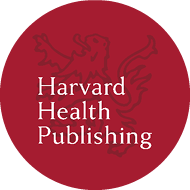Tapping into Digital Channels to Educate and Engage People in Their Own Care
People who take an active role in their own healthcare are likely to be healthier and have better health outcomes. Since children and teens spend significant time in front of screens — 4 to 6 hours per day for children ages 8 to 12 and as many as 9 hours a day for teens — some health professionals are turning to digital channels to communicate with young people and engage them and their families in their healthcare.
These efforts provide valuable models that can be adapted to meet a wide range of needs, ages, and populations.
Understanding Digital Health and Behaviors
To understand young people and their families’ use of technology and digital channels, Boston Children’s Hospital conducted a survey (pre-pandemic) among children and adolescents treated through their primary care clinic.
“We learned that about half of youth and adolescents had posted on social media about their health—including their mood, feeling sick, having a fever, or having a chronic condition,” said Jonathan Hausmann, MD, attending physician in the Rheumatology Program at Boston Children’s. In addition, many parents and caregivers said connecting online with other parents made them feel less alone. This was especially important for those with less common medical conditions, since their families were eager to find others with similar experiences.
The survey also revealed that 99% of parents and caregivers rely on Facebook to learn about their child’s condition. “About half of caregivers revealed that whatever they learned online affected their decision on whether or not, and how, to treat their child’s condition,” Hausmann said.
This speaks to the importance of healthcare providers making the time to educate families about their child’s condition and helping them evaluate information sources to ensure they are reliable. “We need to look at online resources [and social media channels] as complementary to what we do in the clinic,” Hausmann said. “These sources can’t replace medical advice, but they can extend it in new ways by increasing learning opportunities and sharing the personal experiences of other families.”
Empowering People Through Connected Health Channels
During the pandemic, Hausmann and others used Twitter and other digital channels to form the COVID-19 Global Rheumatology Alliance, a grassroots organization composed of people with rheumatic conditions, parents, rheumatologists, and researchers from around the world. The group aimed to better understand the impact of the COVID-19 pandemic among people with rheumatic diseases.
“People with rheumatic conditions helped to create a survey to learn about their peers’ experiences during the pandemic and helped us distribute it through patient advocacy groups’ websites, email lists, and social media channels,” Hausmann said. “We had expected to hear from about 1,000 people but actually received more than 10,000 responses from around the world within just a few months. This gave us a better understanding of people’s exposure to COVID-19 and vaccine experiences. We also learned about their experiences and impacts resulting from the pandemic, including high rates of unemployment and educational disruptions,” Hausmann said. “This effort gave a platform to so many people around the world. This wasn’t a doctor saying how patients were doing, but rather, the patients were speaking for themselves,” he added.
In fact, people with rheumatic conditions helped lead every facet of these connected health efforts. They helped design the survey questionnaire, distributed it, managed the marketing, collected the data, analyzed the data, and wrote an article sharing the results.
Funding from the American College of Rheumatology now helps cover costs of the collaboration, which was initially staffed by volunteers.
Communicating with Young Women Online
The Center for Young Women’s Health (CYWH) website is another compelling digital effort that has a global reach. The website, run by the Division of Adolescent/Young Adult Medicine and the Division of Gynecology at Boston Children’s Hospital, informs young women about a variety of factors affecting their health.
“[Our website has] been averaging well over 400,000 visits per month so far in 2022,” explained Emily Gallagher, BSN, RN, CPN, a registered nurse in the Division of Gynecology and a nurse educator for CYWH. “Most of our users find us through the major web search engines, and we're always working to keep our site relevant and accessible for those searching for useful and accurate health information,” she said.
The website has an “Ask Us” section for people to submit anonymous health questions on topics ranging from sexual health to nutrition and mental health. Up to three questions a week are answered by a healthcare professional.
The CYWH also hosts monthly text-based chats for young women diagnosed with polycystic ovary syndrome (PCOS), endometriosis, and Mayer-Rokitansky-Küster-Hauser (MRKH) syndrome—a rare congenital condition—as well as for the parents of teens with MRKH syndrome.
Funding for the website comes primarily from the Boston Children’s Hospital League, a group of 500+ volunteers who conduct fundraising activities to support hospital programs and services that typically are not covered by insurance, along with gifts and grants from other donors.
How Digital Health Supports Traditional Efforts
Gallagher pointed out that the CYWH’s educational approach to connected health is complementary to traditional healthcare visits and plays an important role in supporting the hospital’s broader mission of serving as an educational resource for the greater community.
This model can also be adapted to meet the needs of other groups. In fact, Boston Children’s recently used the lessons learned through CYWH to create another website called Young Men’s Health.
As all of these efforts illustrate, digital engagement can be a viable way to inform people and ensure they are engaging in caring for their health.

